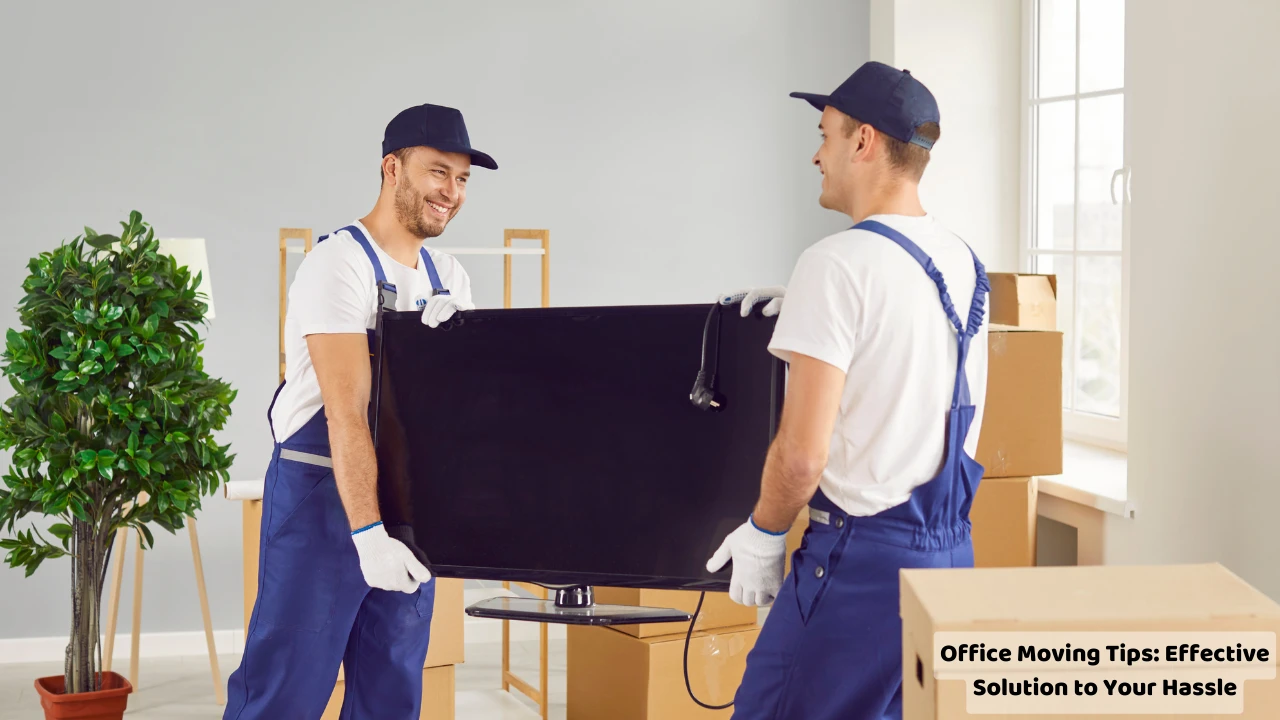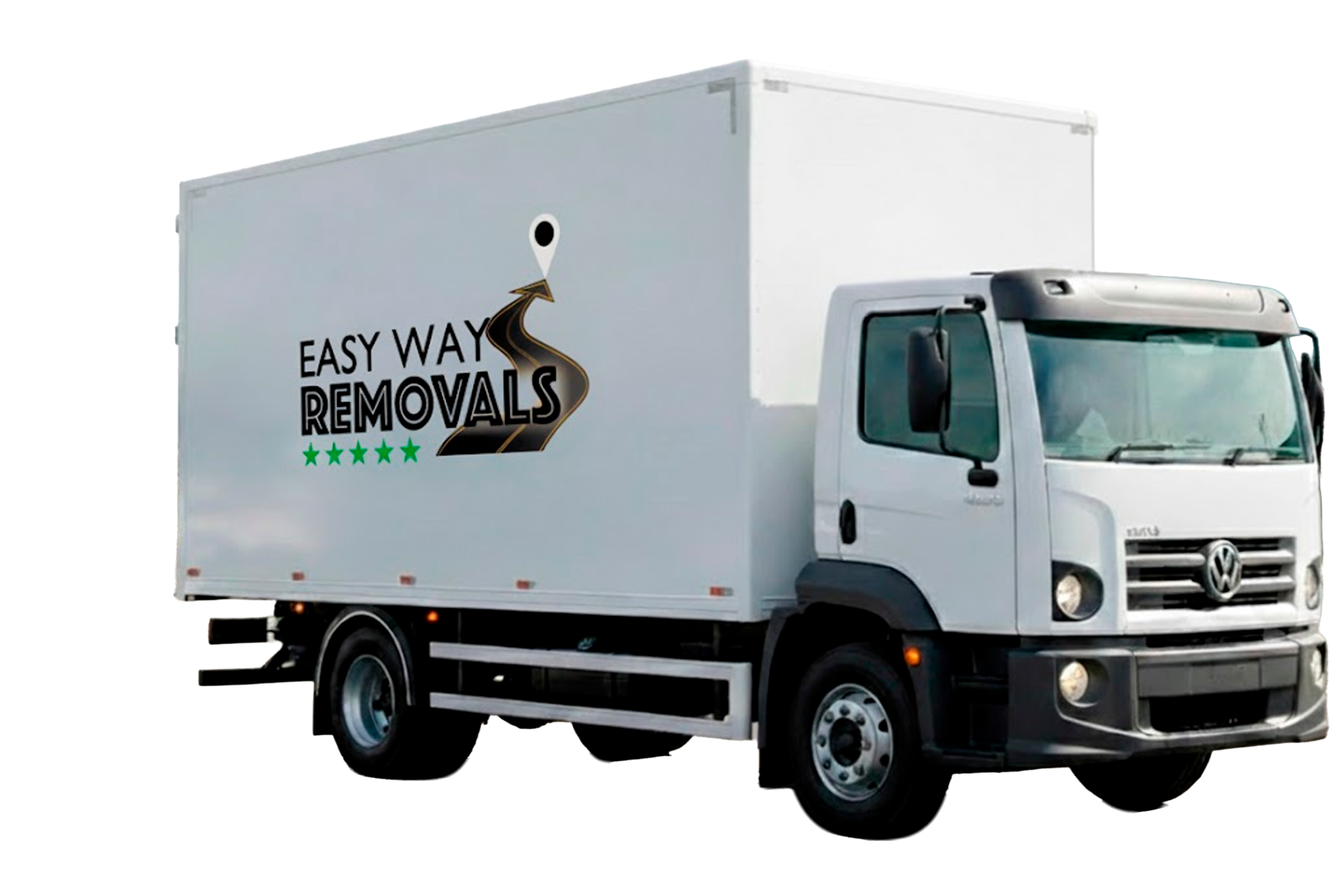
Moving offices can feel overwhelming, but it’s often necessary for businesses to grow. Whether you’re moving to a bigger office, a better location, or combining workspaces, planning ahead is super important.
Here’s a quick brief of our office moving tips: After careful planning and prep work, the next steps involve putting your relocation plan into action. This means sorting through stuff, packing things up, taking furniture apart, and keeping everyone in the loop.
On a moving day, make sure your team is ready, load and unload the moving truck smartly, and after the move, assess how everything went, update info as needed, reconnect with contacts and celebrate with your team.
In this guide, we’ll walk you through the process of moving your office, from planning to after the move. We’ll share helpful tips to make your transition easy and stress-free.

Moving to a new office is exciting for any company, and it doesn’t have to be stressful for those in charge.
A survey by E.ON found that moving is the second most stressful task for small business owners, right after hiring new staff. Because of this, many companies put off moving and stay in small, costly spaces.
Here are some tips to make office relocation faster and smoother.
Here’s what you need to think about six months before moving your office:
Check if your lease is still on. If it is, make sure you won’t lose any money when you move out. Think about any repairs you need to do before leaving.
Decide who will manage the move. You can lead or assign someone else in your team to do it. Split tasks among your team members.
This means more than just cleaning. You need to restore your old office to how it was before you moved in. This includes fixing any damage and removing things like cables and signs.
Figure out how much you can spend on the move. Decide what’s most important to spend money on and where you can save.
Think about what kind of insurance you need for your move. This will help you budget better and tell the moving company what you need.
Start looking for moving companies. Check their reviews and make sure they have experience with office moves.
Get quotes from at least three moving companies so you can compare prices.
Keep track of everything you need to do for the move. Use a folder or a document online where everyone can add their notes.
Let your employees know about the move. Give them all the details and ask for their feedback.
Make sure everything you have will fit in your new office. Measure your furniture and equipment to be sure.
Write down everything you’re taking with you and what you’re leaving behind. This will help you plan the move better.
Check out our informative blog to get a detailed understanding of business relocation costs in the UK.
Here’s what to do three to four months before moving your office:
Book your moving company as soon as possible to secure your date.
Decide when tasks like disconnecting phones and clearing desks will happen. Assign team leaders and give team members their responsibilities.
Employee communication during an office relocation is super important. Inform your employees about the moving date and what they need to do, like packing up their work areas. Make sure they know what’s expected and when.
Let your current landlord know when you’ll be leaving.
Tell your partners, clients, and vendors about your move so they know your new contact details.
Figure out how to move any heavy or hazardous equipment. Order any items that take time to build or ship.
If needed, hire other vendors like interior designers or cleaners for your new office.
Start gathering packing materials like boxes, tape, and labels. Consider getting free supplies from local sources.
Sort through your stuff and tag anything you want to sell or donate. Consider holding a sale or arranging for donation pickup.
Keep talking to your employees about the move. Send updates and remind them about important details of the new office.
Here’s what to do two months before moving your office:
Decide where everything will go in the new office, including desks, equipment, and common areas. Know where tech connections and power outlets are.
Set up internet, phones, and utilities at the new office. Plan with IT to set up computers. Let current vendors know about changes.
If you’re getting new furniture or equipment, start buying now. It takes time to ship and assemble.
Reserve a storage unit near your new office for things you don’t need right away.
Choose a labelling system and make sure everyone uses it consistently.
Pack up non-essential items that you won’t need before the move. This will help you focus on more important tasks later.
Order new business cards, letterhead, and other materials with your new address.
Make sure it’s clean and ready for your move. Start decorating and bringing in packed items that you won’t need immediately.
Here’s what to do one month before moving your office:
Keep labelling furniture, equipment, and supplies. Check with your team to make sure tagging is going well and everyone has what they need to pack.
Double-check the move date and consider making a moving-day plan to coordinate logistics.
Order keys and access cards for the new office ahead of time so they’re ready when you need them.
Make sure to back up all important data on your computer. Consider scanning files to digitise them and shred paper copies to lighten the load.
Plan the departure and arrival times for the moving truck with building managers to avoid any issues on a moving day.
Get a clear understanding of the building rules for both your current and new offices. This will help plan for any special requirements on a moving day.
If possible, move smaller items like plants and office supplies ahead of time to simplify moving day.
Have everyone pack up their own desk space. Give clear instructions and encourage them to start early to avoid last-minute rush. Consider giving them time off to pack if needed.
Here’s what to do one week before moving your office:
Make sure to update your new office address on your company website, financial accounts, social media, subscriptions, and business listings like Google and Yelp.
Sit down with your moving team to review the schedule for moving day. Discuss what still needs to be done, when the movers will arrive, what items should be moved first and last, who will supervise the movers, and if you’ll provide refreshments.
Remind employees to finish packing up their desks and cubicles. While the IT team may handle tech equipment, everyone should clear out personal belongings and office supplies.
IT setup and disconnection is crucial. Ensure your team starts early on disconnecting and reconnecting tech equipment. Plan how to recycle or donate any unneeded equipment properly.
Here’s what you have to do:
Make sure everything is packed and labelled for relocation. Do a final check to ensure everything is ready to go and pack any remaining items if needed.
Gather all company keys, parking passes, and access cards from employees. These need to be returned to the landlord or property manager before you leave.
Here’s what you have to do on a moving day:
Be present at the old office to greet the movers, let them in and out, and provide any necessary instructions. Someone should also ensure a clear path for the movers, identify fragile items, and oversee the move process.
Take a final look around the vacated office to ensure nothing is left behind and to check for any property damage. Return all keys and parking passes unless arrangements have been made with the property owner. Confirm the termination of your lease if necessary.
Visit our informative blog to learn how to organise an office move.
After completing your office move, here are some steps to help you settle into your new space:
Start by unpacking essential items and testing your technology, including phones, computers, printers, and servers. Ensure everything is working smoothly.
Double-check that everyone has been informed of your new address. Update your online presence and any printed materials like business cards or labels with the new address.
Gather your team to discuss post-move tasks. Assign responsibilities for removing tags, unpacking, and stocking the kitchen, restroom(s), and supply cabinets among employees.
Moving offices is a big accomplishment, so take some time to celebrate with your team. Plan a small party or luncheon to thank everyone for their hard work and to welcome them to the new office space.
Besides, check out our insightful blog to learn common challenges in office relocation and how to tackle them in London.

Looking for affordable office removals in London? Choose Easy Way Removals. Our man and van services are reliable and efficient, tailored for your office relocation needs, ensuring a smooth experience. With our experienced team, efficient packing, secure transportation, and timely execution, we offer customised solutions at competitive prices.
From the initial assessment to detailed planning and systematic execution, we handle your office removal with care and professionalism. Trust us to manage your office move seamlessly, minimising disruption to your business.
Book now for a stress-free office removal experience in London.
To sum it up, these Office Moving Tips offer a detailed guide for a smooth and successful transition for your business. By following these tips, you can easily handle the challenges of moving your office. From planning and packing to executing and paying attention to details, these tips are essential for a stress-free move. Remember these tips to make your relocation process easy and worry-free.
Planning is key! Start early, communicate with employees, and consider hiring a moving manager to ensure a smooth office relocation.
You can start planning a year ahead, but it’s best to start at least six months before the move. The actual move can take a few hours for local moves and several days for long distances.
To start planning your office move, first set a budget and figure out what you need to move. Then, find and hire a moving company. Finally, work with them and your team to create a moving plan with deadlines. For more information, refer to our checklist.




